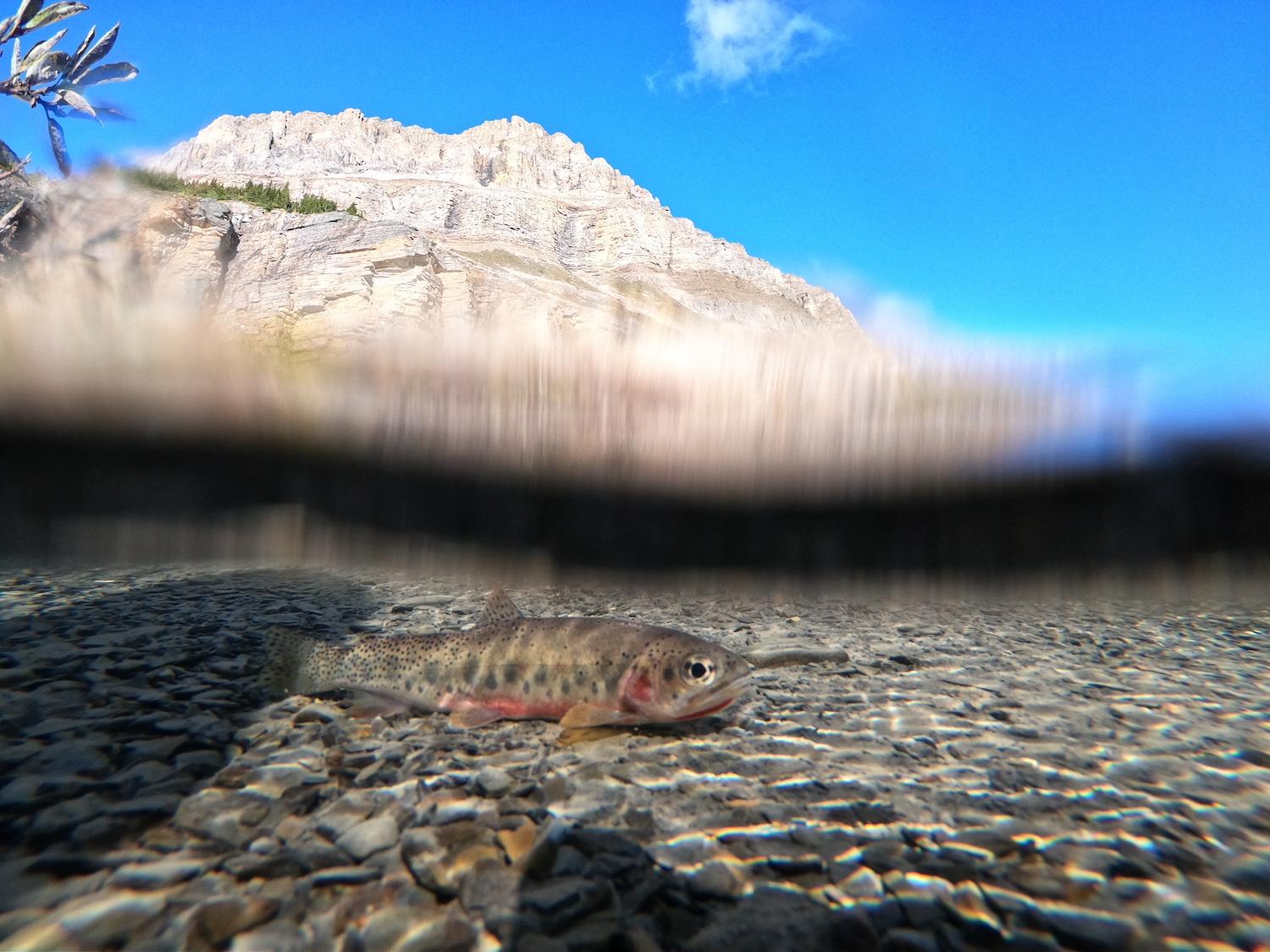
A westslop cutthroat trout is shown under water in Banff National Park/John Jimmo, Parks Canada
“Fish are hard — they’re not as exciting as bear and bison and some of the rare birds we’re trying to save,” admits Parks Canada aquatic specialist Shelley Humphries. But she has a conservation success story to tell about westslope cutthroat trout in Banff National Park that she hopes people will listen to.
After more than a decade of hard work, Hidden Lake is finally a safe refuge for the threatened but gorgeous fish with the distinctive red slash on its lower jaw and black polka dots. Parks Canada placed thousands of eggs into remote streamside incubators in Hidden Lake and Fish Lakes in July — a project milestone.
It also just wrapped up a summer full of guided conservation hikes to showcase the project. “There’s a certain type of public visitor who wants this educational offer,” says Humphries. “They’re happy to go and hike, but they have so many questions. I think the public also needs some good news. We can save these fish. We just have to choose to save this fish.”
The Alberta population of westslope cutthroat is listed under the Species at Risk Act as threatened because it occupies less than 10 per cent of its historical range.
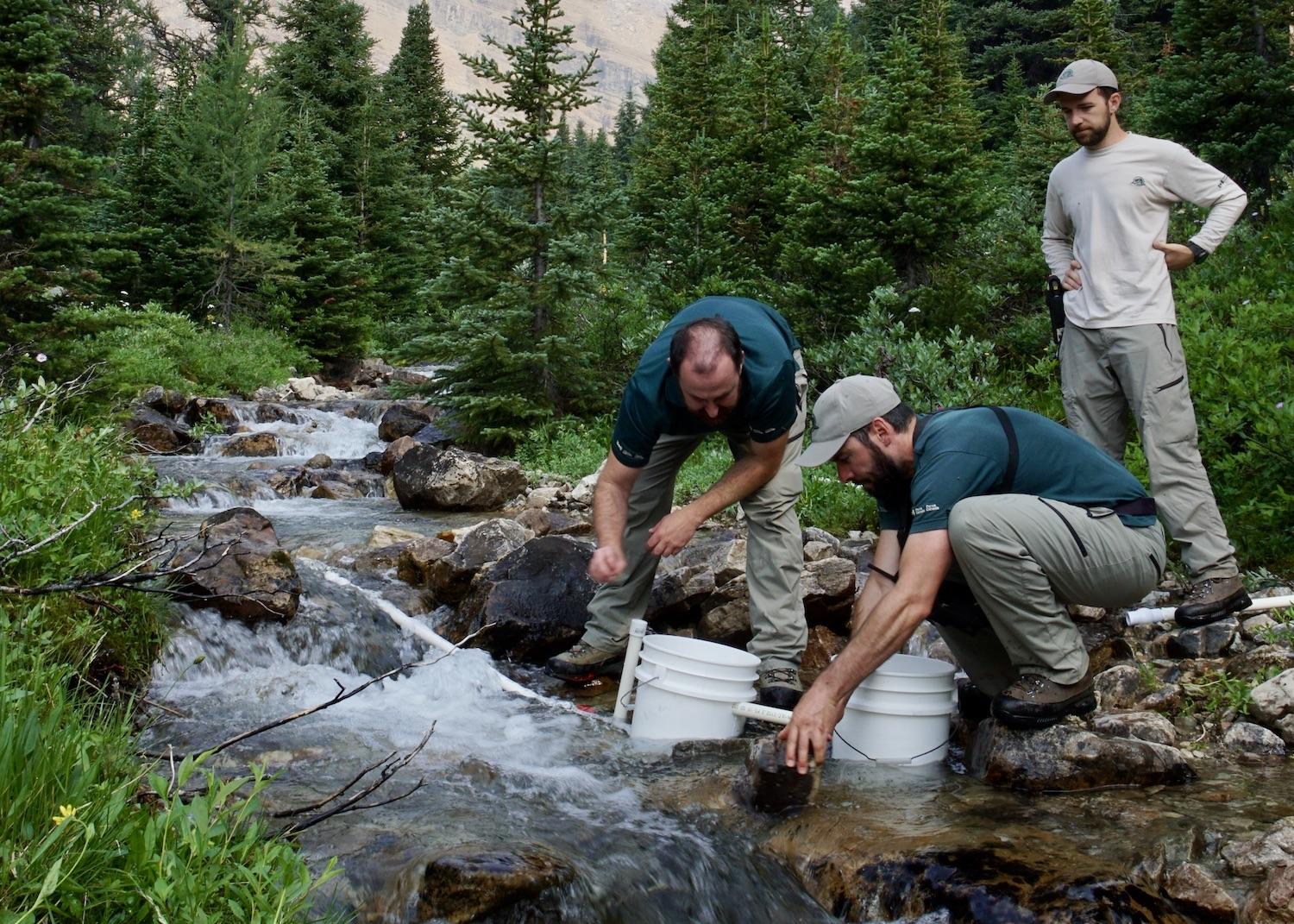
The Parks Canada aquatics team installs remote streamside incubators in Banff/Kellen Martel, Parks Canada
The fish lives in cold streams and lakes and eats aquatic insect larvae. But across its range, it’s also threatened by habitat loss, habitat damage and increasing water temperatures caused by climate change.
Pure populations exist in some of Banff’s isolated streams, but many of the park’s fish are hybrids due to cross-breeding with introduced rainbow trout. This interbreeding dilutes the wild gene pool and makes cutthroats less able to adapt to change and survive over the long run.
This story actually begins with a grave mistake. In the early 1900s, Parks Canada began stocking the mountain lakes of the country’s first national park with non-native species like brook trout and rainbow trout to satisfy visitors who wanted to fish. It stopped the misguided practice in 1988, but these non-native species flourished and their genes live on in the DNA of wild fish.
Banff anglers are no longer allowed to possess cutthroats. And Parks Canada has spent years working to protect and restore the species by identifying secure habitat, removing non-native fish, reintroducing westslope cutthroat trout and monitoring for success.
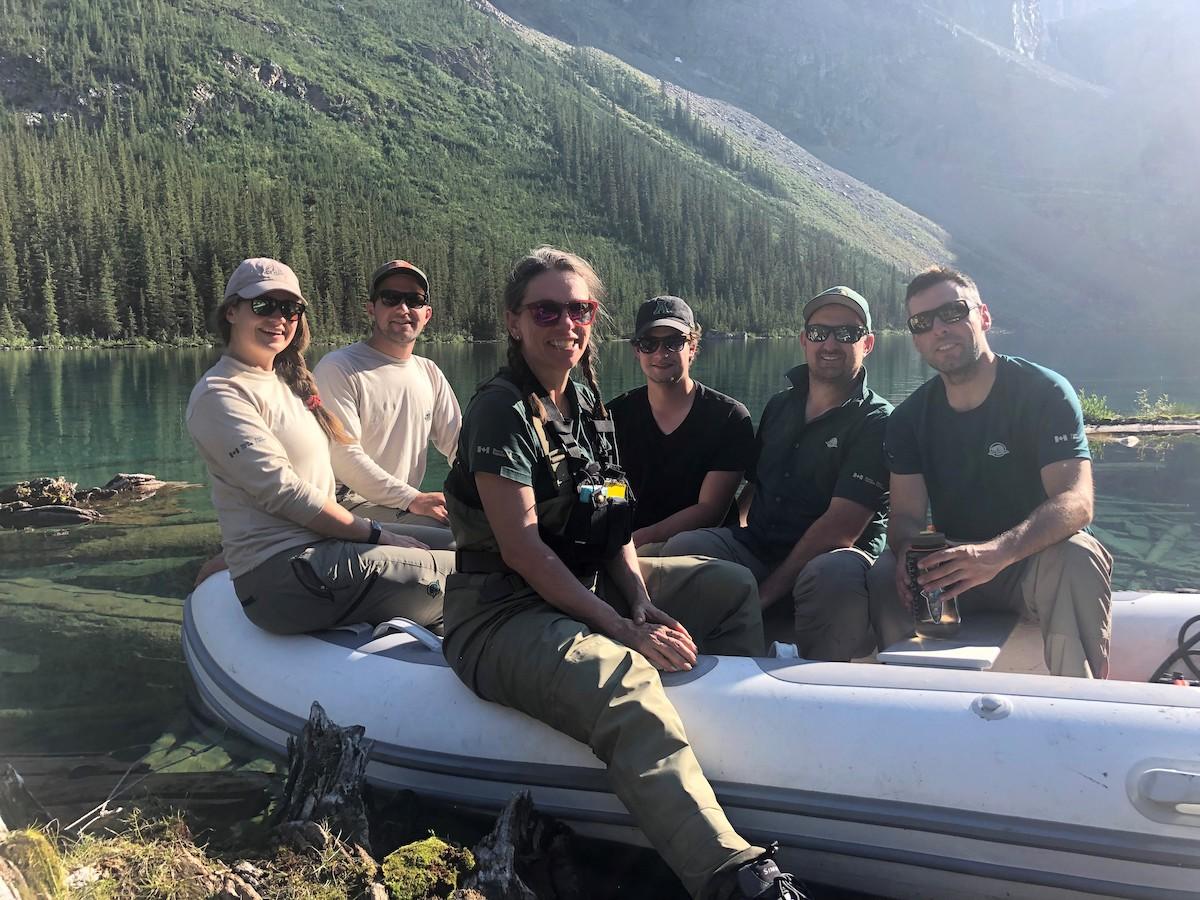
Aquatic specialist Shelley Humphries, center, and the Parks Canada team at Hidden Lake in 2022/Parks Canada
It has conducted stream surveys to locate westslope cutthroat trout, collected DNA to find out if they are hybrids or wild stock, and restored fish passage by fixing and replacing highway culverts.
The chance discovery of a waterfall downstream in glacier-fed Hidden Lake — which wasn’t shown on maps — helped make the lake the perfect spot for the conservation project. The waterfall stops the non-native trout from returning to the lake.
The Parks Canada team started in 2011 trying to remove non-native species by netting and electrofishing, but it didn’t work. On advice that Humphries gathered from American colleagues, they introduced Rotenone, a natural fish toxicant derived from plant roots and now made in the U.S.A., in 2018 and 2019. The pink powder is added to the water, where it’s only toxic to fish (quickly shutting down their respiration) before it breaks down.
“It’s a very safe chemical to use,” says Humphries. Followup monitoring of the stream showed that the food web recovered.
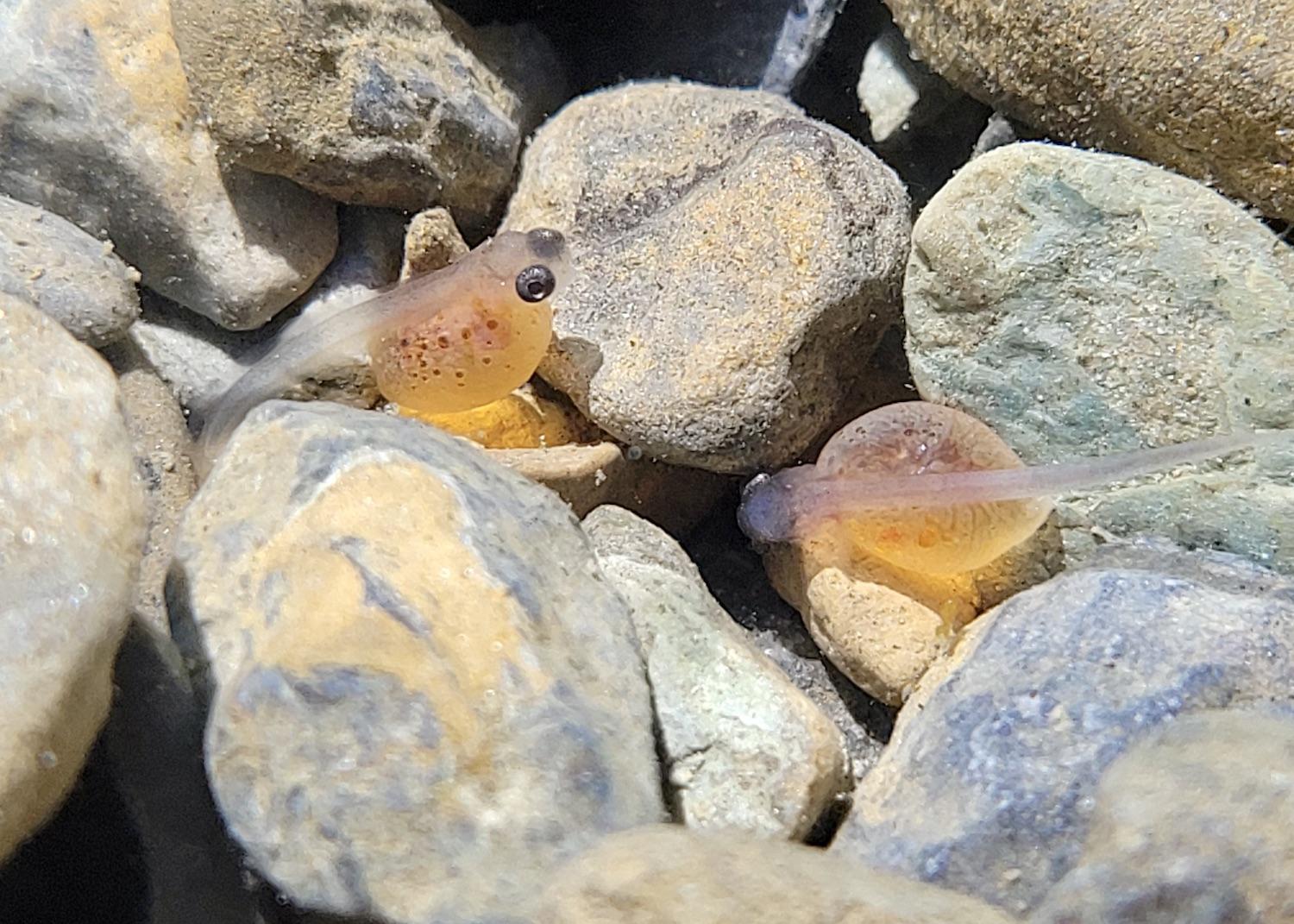
Tiny westslope cutthroat trout alevin are newly spawned and still carrying yolks/John Jimmo, Parks Canada
Once Hidden Lake was free of any fish, it was time to reintroduce the cutthroats. The team caught wild trout and took fertilized eggs to incubators. The eggs were then transferred to remote stream-side incubators that protect them from becoming prey.
The buckets cradle the growing trout and simulate a nest environment as water flows through tubes and a valve set up just so in a moving stream. Alevin — newly hatched with yolks attached to their bellies — swim in the bucket-like contraptions for about a week until they’ve absorbed all the nutrients in the eggs and are ready to swim freely.
The guided conservation hikes ran from July 10 to Sept. 25, and sometimes people got to visit the buckets or have the rare chance to see tiny fish.
“In real life, it’s very difficult to see fish when they’re at this stage,” says Humphries. “So it has been really fun to show the public what these tiny fish look like.”
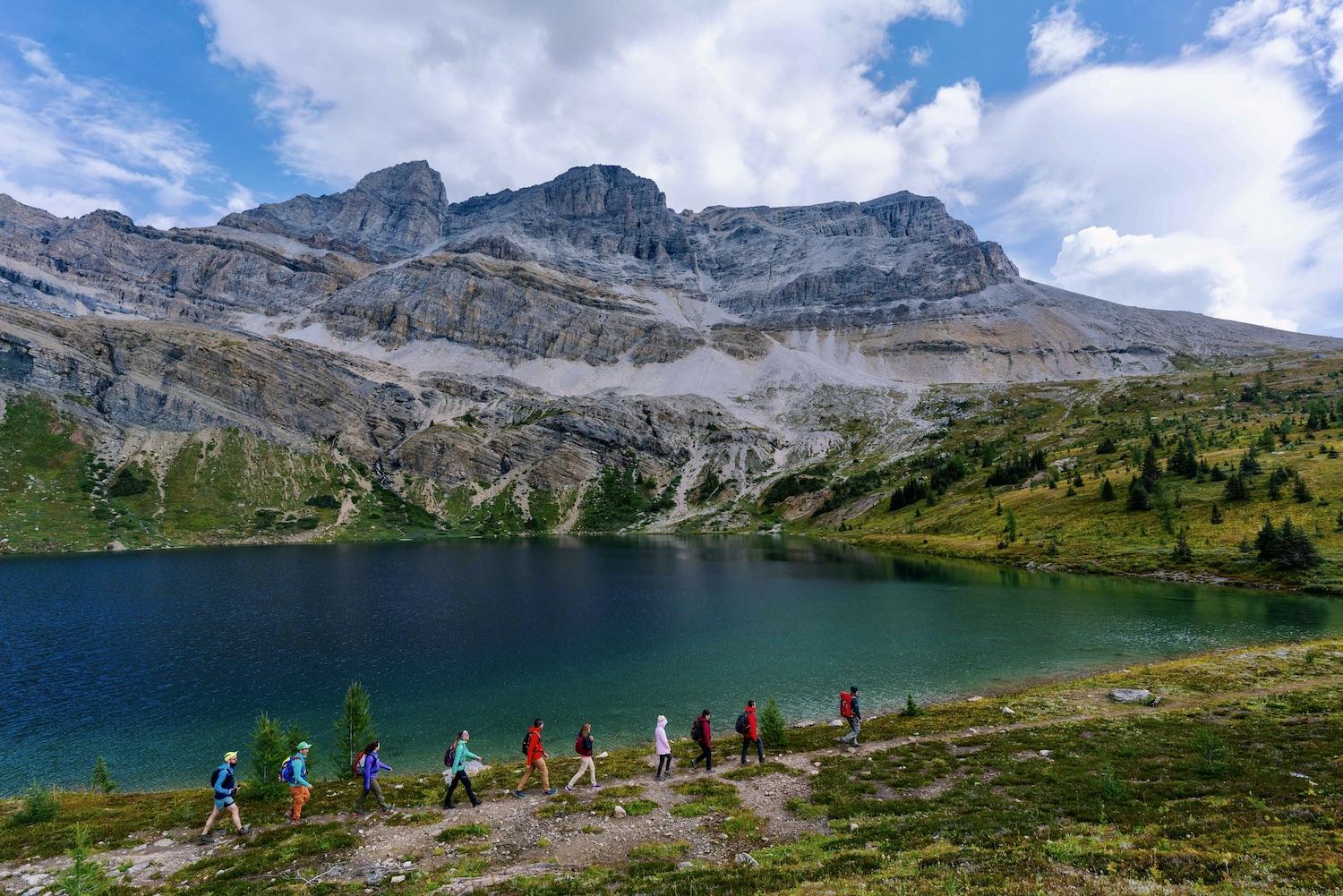
In 2022, Parks Canada offered guided conservation hikes to Hidden Lake/Parks Canada
The hikes cost $73 ($53 USD) and lasted about six hours. They started with a shuttle ride that trimmed the 18-kilometre (11.1-mile) trail down to 10 kilometres (6.2 miles). Humphries hopes they can be offered again in 2023, adding the fee doesn’t fully cover the cost of providing a guide and transportation.
The restoration project is also happening in remote Margaret Lake, and the Katherine Lake/Helen Lake area.
But as Humphries points out, anyone can hike to Hidden Lake, along the scenic Skoki Trail.
As for the restoration project, there is funding through 2025 and the goal for now is to keep adding fish to Hidden Lake so they’re not all the same age and don’t all spawn at once.



Add comment